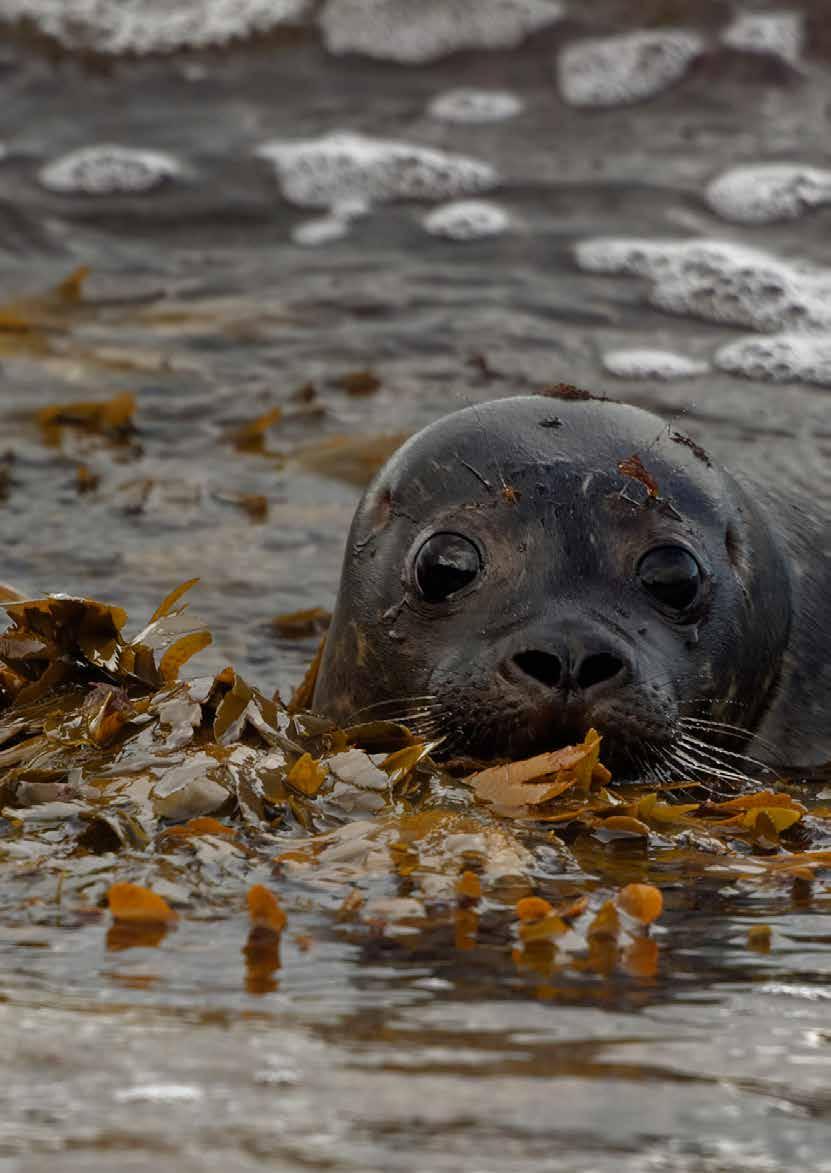
1 minute read
WILDLIFE OVER WINTER
With a change in seasons, comes a change in the types of wildlife we care for. As we head from Autumn in to Winter, we usually end up looking after dozens of seals.
Most of the UK’s population of grey seals can be found in Scottish waters. In early autumn, pregnant greys return to breeding sites to give birth. It’s common to spot seals on Scotland’s beaches as we have so much coast.
Advertisement
Grey seal pups have a fluffy white coat. A mum will leave her pup on a beach whilst she goes off to forage for food in the water.
What should you do if you see a seal?
If you come across a seal on a beach, keep a safe distance. Seals can be startled by dogs, so if you are walking a canine companion please keep them on a lead under close control.
A seal pup with a fluffy white coat won’t be able to swim. In some cases, a pup may have shed their coat. Don’t disturb them. Instead, monitor them.
Under no circumstances should you try and guide the seal back to the water. The reason a seal pup is left on the beach whilst mum forages is because they cannot swim. Even an adult seal which is injured or distressed could die from exhaustion if forced off of land. Sadly, we have seen this happen more than once.
When should you get our help?
If there is no sign of mum returning after four hours, give our animal helpline a call. Whilst we want people to monitor a seal, if you can see obvious signs of injury such as bleeding or glued together eyes, call us right away. That’s a seal in need.
What happens then?
If we take a seal to our National Wildlife Rescue Centre, they’ll get expert care and treatment until they are old enough and strong enough to return to sea. We have a purpose-built seal unit and outdoor pools to help them build those sea-flippers! We feed seal in a way which shows them how they’d hunt prey in the wild, maximising the chances of a successful reintegration back in to a seal colony.
Want to find out more about wildlife?
Visit www.scottishspca. org/wildlifewise










